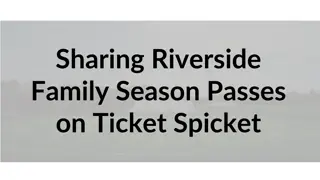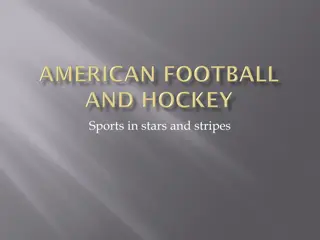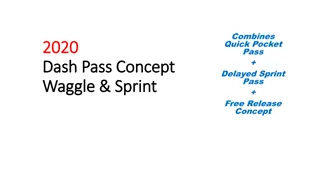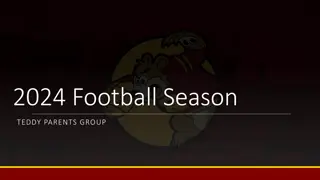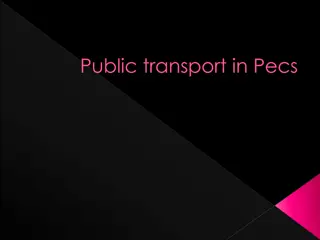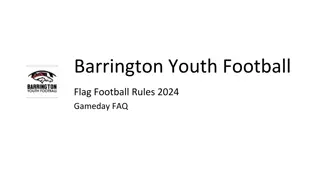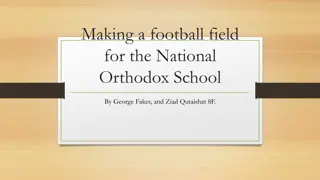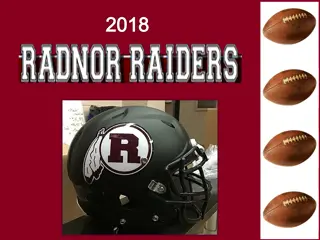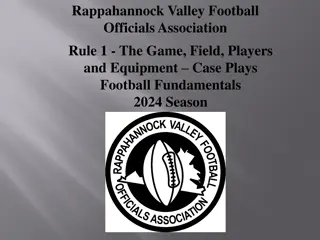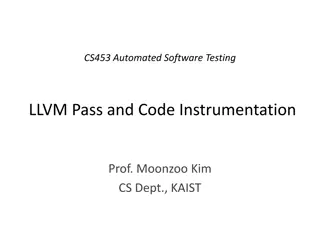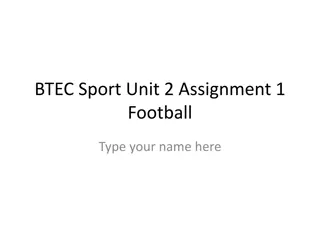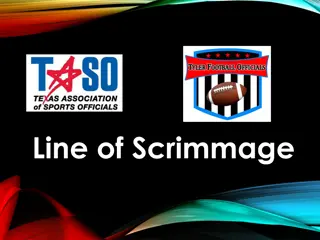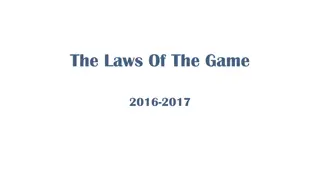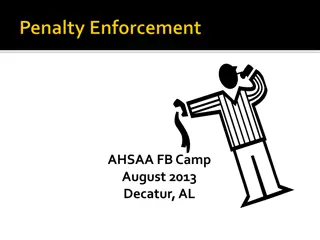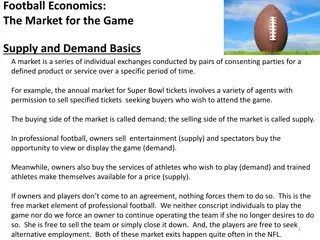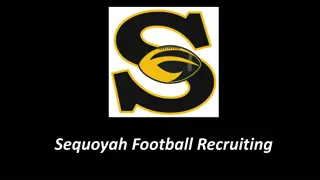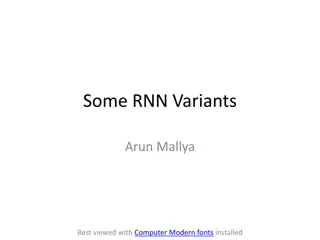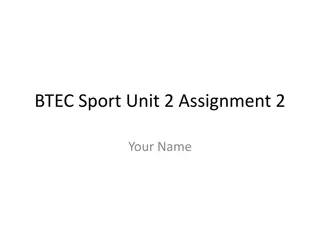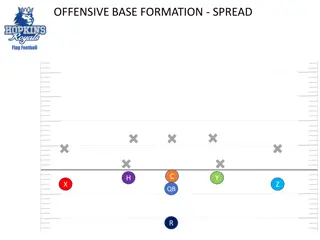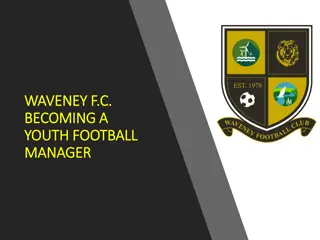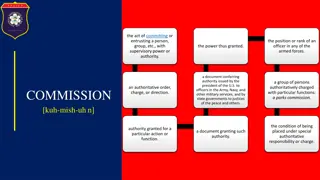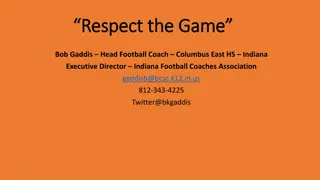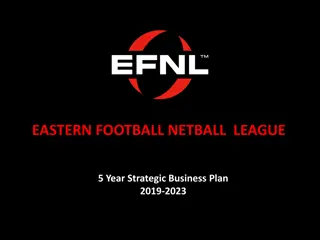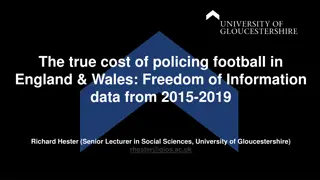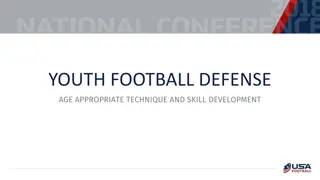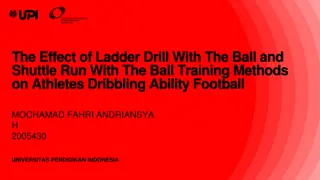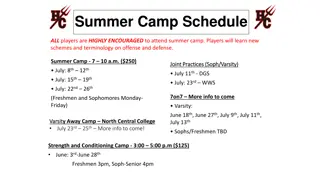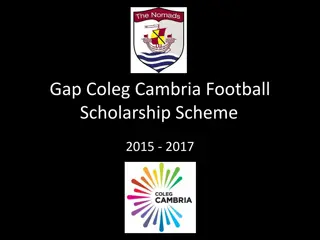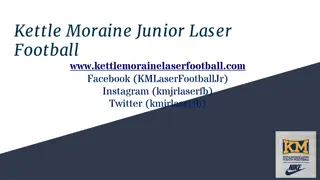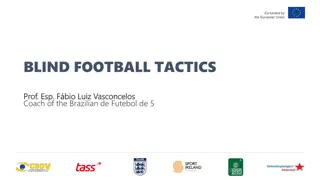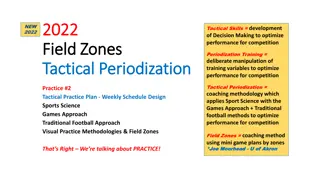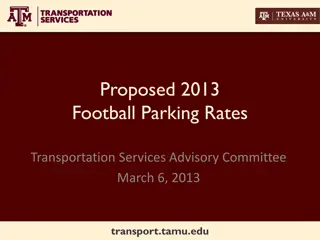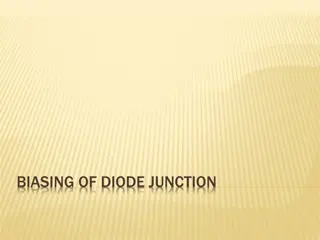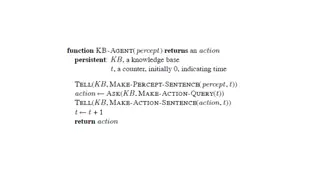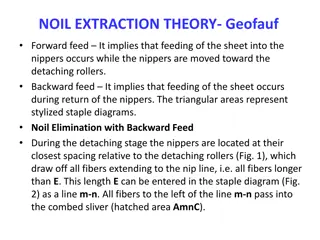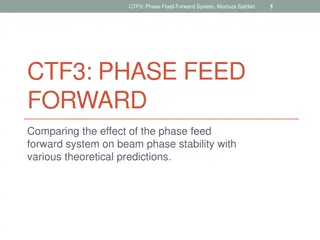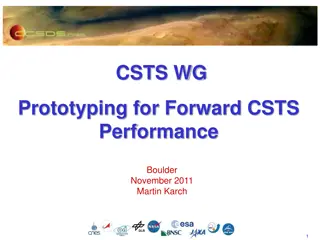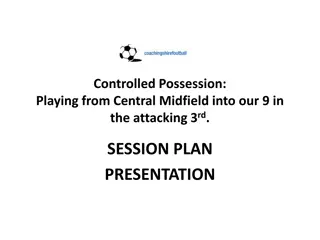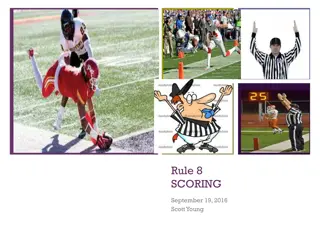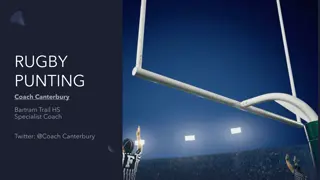Understanding the Basics of Forward Passes in Football
In football, a forward pass is a crucial play that involves specific rules to determine legality. This includes when a passer is beyond the neutral zone, limitations on multiple forward passes, conditions for illegal forward passes, and eligibility rules for receivers. Knowing these fundamentals helps in understanding the passing game's dynamics and the consequences of legal and illegal passes.
Download Presentation

Please find below an Image/Link to download the presentation.
The content on the website is provided AS IS for your information and personal use only. It may not be sold, licensed, or shared on other websites without obtaining consent from the author. Download presentation by click this link. If you encounter any issues during the download, it is possible that the publisher has removed the file from their server.
E N D
Presentation Transcript
The Passing Game The Passing Game September 16, 2019 Ed Dubish
The Passing Game The Passing Game A passer is a player who throws a legal forward pass. He continues to be a passer until the legal forward pass ends or until he moves to participate in the play. (2-32-11) The key to the definition is after it is clear the ball has been thrown and the pass needs to be a legal forward pass. Only difference in the definition from NCAA & Fed is the legal in legal forward pass. This is important when determining Roughing the Passer (more to come on roughing stay tuned)
The Passing Game The Passing Game A simultaneous catch causes the ball to become dead and possession belongs to the offensive team. If airborne, both players need to return to the ground inbounds. Contact with the ground does NOT have to be simultaneous.
Forward Pass Forward Pass Forward Pass: If the pass is towards the opponent s end line, then it is forward. If it s not forward the pass is backward (parallel to the LOS is NOT forward). Once the passer starts his arm forward, it s a forward pass, regardless of which direction the ball leaves his hand or where the ball lands. When in doubt, the pass is forward!!!!!!! Batting a forward pass in any direction by eligible players of either team is Legal.
Legal and Illegal Forward Passes Legal and Illegal Forward Passes Conditions where a forward pass is illegal : It is thrown when the passer is beyond the NZ. (Both feet are required to be behind the NZ when the ball is thrown, otherwise it s illegal the passers arm is ok) It is the second forward pass by Team A during a down. It is thrown by either team after a change in possession. It is thrown under duress into an area where there is no eligible Team A receiver. It is intentionally grounded to save yardage and/or time. The passer who is spiking the ball in an effort to stop the clock does not release a hand-to-hand snap immediately, or does so after a muffed snap has touched the ground . Intentional grounding in the end zone is always a safety!!! Let s ask ourselves, What was the passer s intentions??
Eligibility Eligibility Uniform number and position at the snap Only applies to Legal Forward Passes If an ineligible player is downfield and an illegal forward pass is thrown, there is only one foul for the pass and not a second for the ineligible downfield. If an eligible Team A player steps out of bounds inadvertently or deliberately he does not lose his status as an eligible receiver. He can still be called for OPI and he can also draw a foul for DPI. This is not illegal touching like NCAA Illegal participation
Ineligibles Downfield Ineligibles Downfield My NOT venture downfield on a forward pass that crosses the neutral zone. The exception is allow for normal line play. Contact may NOT continue beyond the Expanded Neutral Zone (2 yards) If the pass is caught by an ineligible receiver, the play continues. This is a foul for illegal touch. If the ineligible receiver is downfield at anytime between the snap & pass it s a foul. If the pass is tipped by Team B in or behind the NZ NO FOUL!!
Illegal Touching Illegal Touching If an ineligible player, bats, muffs, or catches a legal forward pass, it is a foul for illegal touching. Applies equally behind and beyond the NZ 5 yard penalty & loss of down enforced under all-but-one (loose ball play) Lets try and make this call when it s an intentional act . Can you call a foul for ineligible downfield? Think it through!
Possibilities For A Completed Pass Possibilities For A Completed Pass Initially Touched by Caught by Eligible A Ineligible A B Eligible A Ineligible A B Eligible A Ineligible A B Result Legal Catch Illegal Touching Interception Illegal Touching Illegal Touching Illegal Touching*, Interception Legal Catch Legal Catch Interception Eligible A Ineligible A B * Team A's foul would most likely be declined if the down ended with the ball in Team B's possession.
Downfield Contact & Pass Interference Downfield Contact & Pass Interference Downfield Contact: If illegal contact is made prior to the pass being thrown it s a foul for Illegal Use Of Hands (10 yard penalty) This includes continuous contact. It is Pass Interference if any player who is beyond the NZ interferes with an eligible opponent s opportunity to move toward, catch or bat a pass. It applies under the following conditions: Legal Forward Pass that crosses the NZ & untouched by Team B in or behind the NZ. Physical contact is necessary Catchability is NOT a factor. Always a 15 yard penalty (or half the distance) & NOT an automatic 1stdown. DPI in the EZ Half the Distance (ball snapped at or inside the B 30.
Offensive Pass Interference Offensive Pass Interference Restricted from the snap until the pass is touched or incomplete. Team A may not initial contact with the defense beyond the NZ. Ineligibles blocking downfield beyond the Expanded NZ can be OPI Did the blocking downfield have a material effect on the play? If no, lets try & call Ineligible downfield. Whoever gets there first wins.
Defensive Pass Interference Defensive Pass Interference Restriction begins when the pass is thrown. Needs to be against the intended receiver or an eligible receiver in the area of the pass. (This is implied in the definition of PI) If DPI occurs on a Team A Touchdown, the penalty carries over to the try or next kickoff (8-2-2).
Roughing the Passer Roughing the Passer Roughing only applies when a legal forward pass has been thrown Definition of a passer can t have roughing the passer if he s not a passer. Enforcement: 15 yards & an Automatic 1stDown Previous spot if the pass is incomplete, possession changes (clock on the ready) or if the last run ends behind the NZ. Dead ball spot for plays that end beyond the NZ. Major fouls, except incidental facemask are roughing fouls. Player blocked into a passer is NOT exempt! Nothing about contact at or below the knee & driving the passer to the ground.
Backward Passes Backward Passes Not a forward pass It is legal to throw a backward pass out of bounds to conserve time Dead ball spot & the clock on the snap. Team A is not allowed to bat a backward pass in flight forward Enforcement: 10 yards under the all-but-one principle. Because a backward pass that hits the ground is a loose ball, it may not be batted in any direction by any player. If a backward pass is out of bounds behind the goal line the result is either a touchback or a safety, depending on which team provided the force. I wasn t asked to discuss force, we can save that fun subject for another day.
Questions? Questions?


